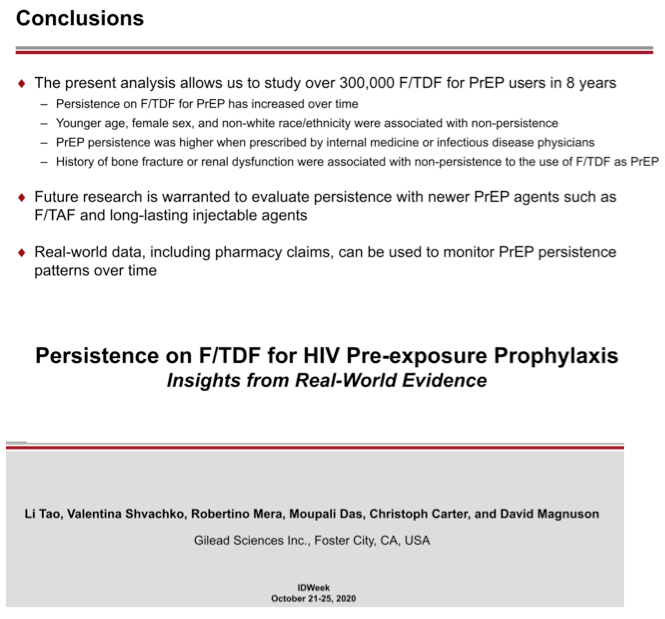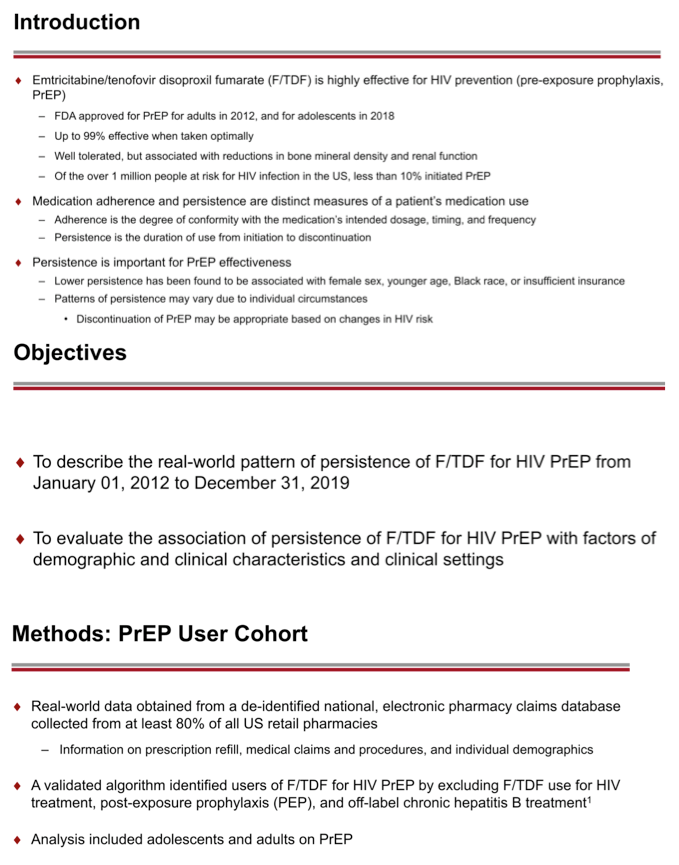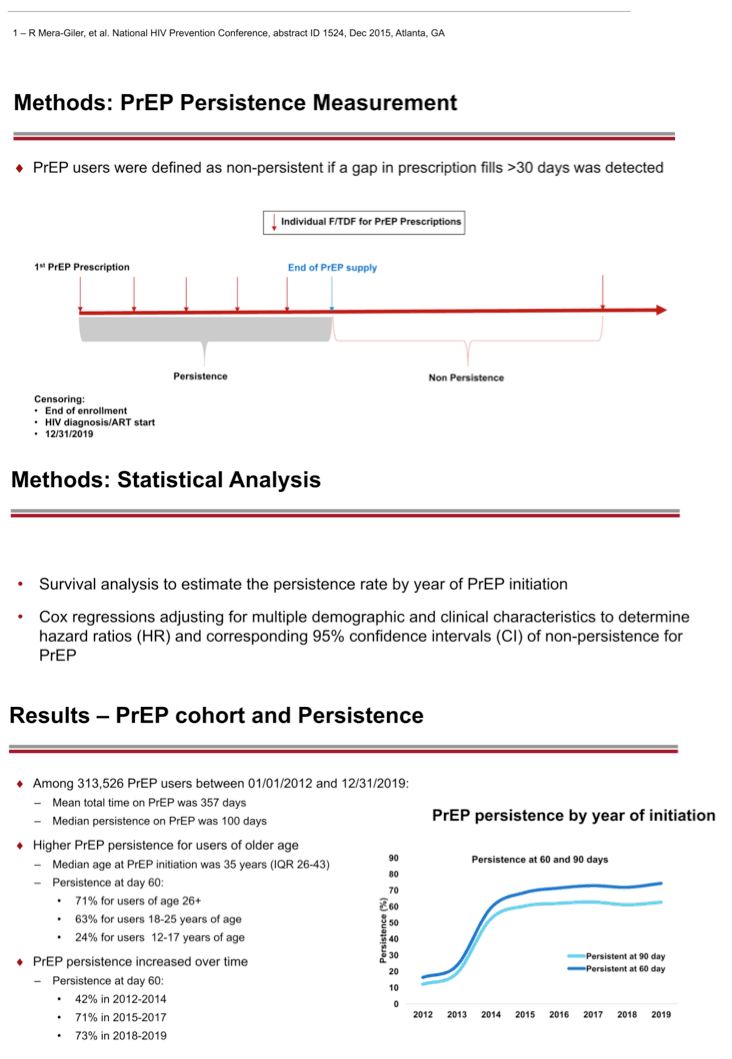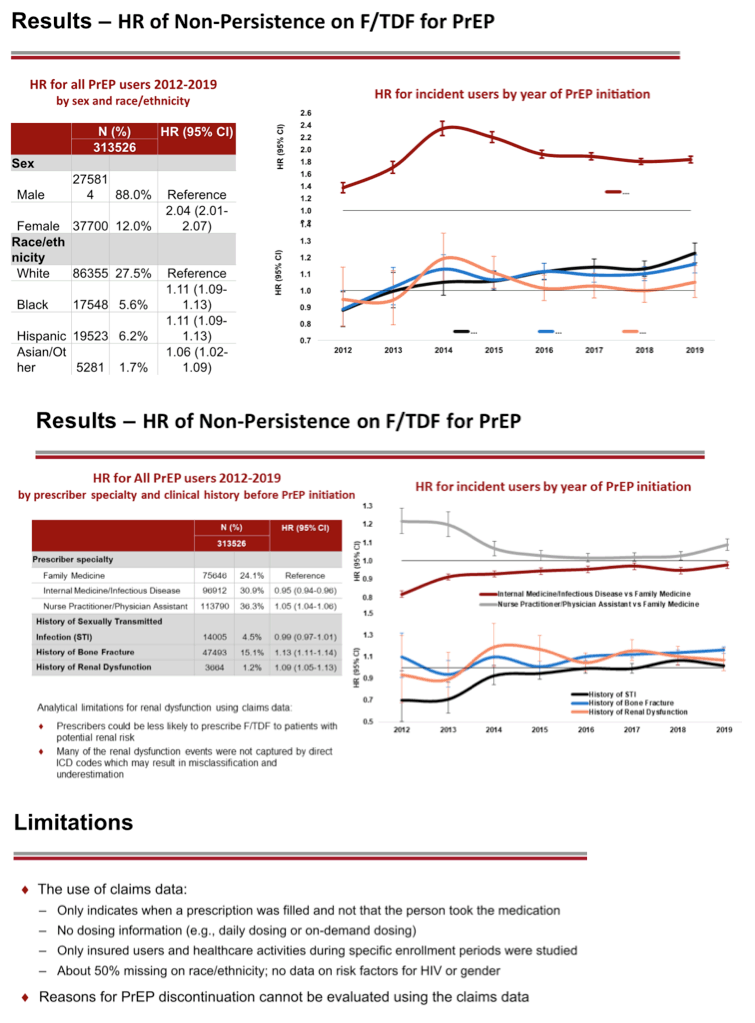 |
 |
 |
| |
Persistence on F/TDF for HIV Pre-exposure Prophylaxis: Insights from Real-world Evidence
|
| |
| |

Background:
Background: Daily F/TDF is highly effective for HIV pre-exposure prophylaxis (PrEP). Prior studies have found that women and people of younger age have lower adherence and lower persistence on PrEP, yet real-world evidence describing persistence associated with other clinical characteristics and the patterns of persistence is limited.
Methods:
Methods: We identified 313,526 HIV-1 negative individuals in the United States who initiated F/TDF for PrEP between January 1, 2012 and December 31, 2019 from a de-identified prescription claims database. PrEP users were defined as non-persistent if a gap in prescription fills >30 days was detected. We used survival analyses to estimate the persistence rate by year of PrEP initiation, and Cox regressions adjusting for multiple demographic and clinical characteristics to determine hazard ratios and corresponding 95% confidence interval of non-persistence for PrEP.
Results:
Results: Among the 313,526 PrEP users with a median age at PrEP initiation of 35 years of age (interquartile range, IQR, 26-43), 88% were men (median days of persistence = 118, IQR 30-316 days) and 12% were women (median 30 days, IQR 30-92 days). PrEP persistence at 30, 60 and 90 days increased over time, reaching the highest levels in 2019 (Figure). In a multivariate analysis, younger age, female sex, and non-white race were associated with higher risk of non-persistence (Table). We also observed associations of a 5% lower rate of non-persistence if PrEP was prescribed by internal medicine or infectious disease physicians than by family medicine physicians, and a 13% lower rate of non-persistence associated prescriptions ordered from mail-order pharmacies than prescriptions of retail pharmacies. Finally, history of bone fracture or renal dysfunction prior to PrEP initiation were associated with a 13% and 9% higher rate of non-persistence, respectively. Figure. F/TDF for PrEP persistence rates over time.




|
| |
|
 |
 |
|
|